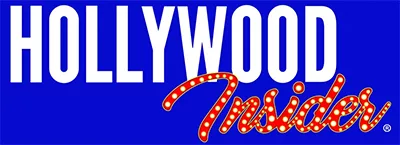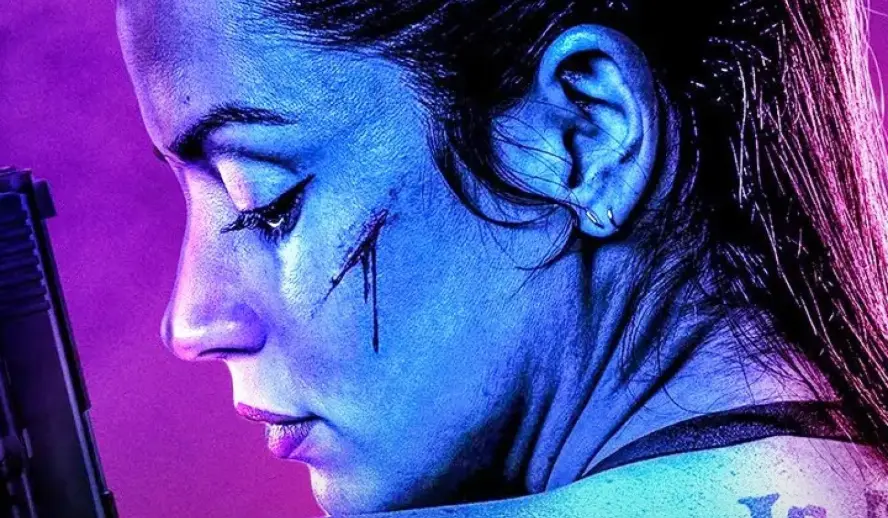Table of Contents
The Misquote Heard ‘Round the Web
Back in 2022, during Variety’s ‘Actors on Actors’ series, Jennifer Lawrence added a bold- if inaccurate- claim to her résumé: that she was the first woman to lead an action movie. “Nobody had ever put a woman in the lead of an action movie,” she said, seated across from Viola Davis. She was swiftly dragged across the internet, from Fox News segments to YouTube takedowns, with seemingly every outlet eager to remind her just how wrong she was.
In a follow-up with ‘The Hollywood Reporter’, Lawrence clarified she had simply misspoken- nervous in the presence of a “living legend,” Viola Davis. Honestly, fair. I wouldn’t be able to string two words together if I was sitting across from arguably the greatest actress of her generation. And in a way, something positive did come out of the backlash: a renewed spotlight on the long and largely overlooked history of the female action hero.
Those retrospectives stretched all the way back to silent-era star Helen Holmes, whose action-packed serials played while Charlie Chaplin was only just getting his start- and even predated Buster Keaton’s film debut. Holmes ran across the tops of trains, leapt from moving locomotives, and scaled buildings nearly a century before Tom Cruise started defying death with stunts like Burj Khalifa. And the lineage stretches all the way forward to Davis herself, who in Gina Prince-Bythewood’s ‘The Woman King’ delivers raw, grounded action backed by months of rigorous training- training that Prince-Bythewood famously does alongside her cast.
Things to do:
- Subscribe to The Hollywood Insider’s YouTube Channel, by clicking here.
- Limited Time Offer – FREE Subscription to The Hollywood Insider
- Click here to read more on The Hollywood Insider’s vision, values and mission statement here – Media has the responsibility to better our world – The Hollywood Insider fully focuses on substance and meaningful entertainment, against gossip and scandal, by combining entertainment, education, and philanthropy.
Mirror, Mirror: Gaze Theory and Gender
In the bathroom mirror, everything is flipped. You see the reverse: raise your left leg, and the reflection lifts its right; the shower appears at the opposite end of the room; a right-handed person brushes their teeth with their left. It’s a world turned sideways. Yet, despite the inversion, the reflection remains you. A mirrored image is not a new identity- it’s a distortion of the same one.
The seminal film theorist Laura Mulvey first introduced the concept of the “male gaze” in her landmark 1975 essay Visual Pleasure and Narrative Cinema. Writing from a feminist and psychoanalytic perspective, Mulvey argued that mainstream Cinema is structured around a masculine point of view, positioning women as passive objects to be looked at rather than active agents within the narrative. In this framework, the camera adopts the perspective of a heterosexual male viewer, rendering female characters as visual spectacles meant to satisfy male desire.
Essentially, the female gaze is concerned with who a woman is, while the male gaze fixates on what she looks like. Case in point: the “fighting fucktoy.” Professor Caroline Heldman defines this trope as “hyper-sexualized female protagonists who are able to ‘kick ass’ (and kill) with the best of them.”. She is not empowering, but ornamental- designed for male pleasure, even when wielding a weapon. Such figures present the illusion of strength while maintaining the objectification at the heart of the male gaze.
Visual artist Toyin Ojih Odutola articulates a deeper anxiety surrounding this: “For a while, I was nervous about portraying women because of the objectification that automatically comes with it, whether the artist intends or not.” Her concern underscores a central dilemma: can artists depict women without reducing them to symbols or surfaces? Objectification may not be essential to art, but it recurs often- especially in genre filmmaking that claims to subvert the male gaze, only to end up replicating it. As Lisa French explains, “the female gaze is not the inverse of Mulvey’s male gaze.” The reverse of a problem is not its solution.
WATCH THE TRAILER of the Film and the Revolution: ‘Can I Go Home Now?’
The Children Around the World Continue to Ask the question
‘Ballerina’ and the Weaponization of Elegance
Take ‘Ballerina’ (2025), the Ana de Armas-led ‘John Wick’ spinoff, which is in fact been noted as a prototype of the ‘woman-in-fridge’ trope. At first glance, it promises a shift in perspective: a woman at the center of an ultra-violent revenge narrative. But this surface-level retooling barely conceals its roots. As Wendy Ide once wrote of ‘Gunpowder Milkshake’, it’s “John Wick with chicks”- a pithy critique that applies here too. The formula remains intact: stylized kills, emotionally vacant choreography, and a heroine who performs violence with grace rather than grappling with its weight.
The film frames the violence through ballet, stylizing suffering with poise and posture. But what ‘Ballerina’ offers instead of depth is dichotomy: the softness of classical dance against the hardness of killing. It’s a tired contrast- and worse, one that feels borrowed. The assassin-as-ballerina concept is suspiciously familiar, echoing the origin story of Marvel’s Black Widow. And here’s the kicker: ‘Thunderbolts*’ explores the trauma of that upbringing with more emotional precision than any scene in the ‘Avengers’ franchise or even the standalone ‘Black Widow’ film. It dares to ask what happens after the ballet fades and the body count rises.
Unfortunately, ‘Ballerina’ avoids such questions. De Armas’s performance is commanding, but the script offers her little interiority. She moves through the film like a weapon already fired- purposeful, emotionally unreachable. Her trauma is aestheticized, just another layer of choreography. The camera lingers on her poise, her bruises delicately framed, her pain converted into pageantry. As New York Times critic Manohla Dargis observes, the female heroes who resonate most are “strong in recognizably human ways.”. ‘Ballerina’ is uninterested in those ways. It offers violence as empowerment without examining what violence costs.
Compare this to ‘Kill Bill’, which succeeds not just because it centers a female lead, but because of Uma Thurman’s collaboration in shaping her character. Quentin Tarantino’s gaze is present, but not unchecked. Thurman’s Bride bleeds, breaks, and rebuilds. She becomes a fully formed woman, not merely a mirror held up to male fantasy.
In the end, a mirror doesn’t produce a new image- it reflects the one already there. Likewise, inverting the male gaze does not automatically produce a female one. It takes more than a reversal. It requires authorship, humanity, and above all, a shift in perspective, not just direction.
Related article: EVOLUTION: Every Ryan Gosling Role From 1995 to 2020, All Performances Exceptionally Poignant
Related article: EVOLUTION: Every Henry Cavill Role From 2001 to 2021, All Performances Exceptionally Poignant
Related article: All Best Actor/Actress Speeches From The Beginning Of Oscars 1929-2019 | Hollywood Insider
The Lineage of the Bulletproof Woman
As the song goes: “You gotta get a gimmick if you wanna get ahead.” Filmmakers and producers are perpetually baffled by what audiences want- what sells, what lands, what sticks. And while there’s no guaranteed answer, one thing remains true: people don’t always know what they want until you give it to them. Case in point: the female action star.
Women have always been part of the action genre. Yes, they were often the stakes, the motivation, the damsel on the train tracks. But there were also female action stars from the very start of Cinema. Helen Holmes, Mary Fuller, and Gene Gauntier were leaping from trains, scaling buildings, and dodging explosions while their male contemporaries- Chaplin and Keaton included- were still climbing the ranks of vaudeville.
The concept of the “woman in the refrigerator,” coined in 1999 by comics writer Gail Simone, describes the trend of female characters being brutalized or killed solely to fuel a male hero’s story. The term comes from a Green Lantern comic in which the hero finds his girlfriend murdered and stuffed into a fridge. From ‘Braveheart’ to ‘John Wick’ to ‘Gladiator’, the trope remains: a woman’s suffering becomes the emotional launchpad for a man’s arc.
But in 1967, that began to shift. Faye Dunaway’s turn as Bonnie Parker in ‘Bonnie and Clyde’ extended the archetype of the gunslinger- and criminal- to include women. In the 1970s, blaxploitation films gave rise to a new kind of heroine with Pam Grier’s roles in ‘Coffy’ and ‘Foxy Brown’– characters who flipped the script, propelled either by their own circumstances or even by a man-in-the-fridge instead.
By the 1990s, the female action hero underwent another transformation: she had to become androgynous. Femininity was seen as a liability. Ripley shaved her head for ‘Alien³.’ G.I. Jane was literally built around the idea that toughness meant stripping away all gendered softness.
That evolution continues- sometimes forward, sometimes in reverse. In ‘Ballerina’, as New York Times critic Jeannette Catsoulis observed, the film is “as sexless as anything by Tim Burton… almost post-sexual,” noting what seems to be an “unspoken agreement” across modern action franchises. These heroines may not be hyper-sexualized, but they’re not fully human either. They’re mirrors again- flipped, stylized, but ultimately still reflections of the same old gaze.
By Joseph Tralongo
Click here to read The Hollywood Insider’s CEO Pritan Ambroase’s love letter to Cinema, TV and Media. An excerpt from the love letter: The Hollywood Insider’s CEO/editor-in-chief Pritan Ambroase affirms, “We have the space and time for all your stories, no matter who/what/where you are. Media/Cinema/TV have a responsibility to better the world and The Hollywood Insider will continue to do so. Talent, diversity and authenticity matter in Cinema/TV, media and storytelling. In fact, I reckon that we should announce “talent-diversity-authenticity-storytelling-Cinema-Oscars-Academy-Awards” as synonyms of each other. We show respect to talent and stories regardless of their skin color, race, gender, sexuality, religion, nationality, etc., thus allowing authenticity into this system just by something as simple as accepting and showing respect to the human species’ factual diversity. We become greater just by respecting and appreciating talent in all its shapes, sizes, and forms. Award winners, which includes nominees, must be chosen on the greatness of their talent ALONE.
I am sure I am speaking for a multitude of Cinema lovers all over the world when I speak of the following sentiments that this medium of art has blessed me with. Cinema taught me about our world, at times in English and at times through the beautiful one-inch bar of subtitles. I learned from the stories in the global movies that we are all alike across all borders. Remember that one of the best symbols of many great civilizations and their prosperity has been the art they have left behind. This art can be in the form of paintings, sculptures, architecture, writings, inventions, etc. For our modern society, Cinema happens to be one of them. Cinema is more than just a form of entertainment, it is an integral part of society. I love the world uniting, be it for Cinema, TV, media, art, fashion, sport, etc.
More Interesting Stories From The Hollywood Insider
– Want GUARANTEED SUCCESS? Remove these ten words from your vocabulary| Transform your life INSTANTLY
– A Tribute to Martin Scorsese: A Complete Analysis of the Life and Career of the Man Who Lives and Breathes Cinema
– Do you know the hidden messages in ‘Call Me By Your Name’? Find out behind the scenes facts in the full commentary and In-depth analysis of the Cinematic masterpiece
– A Tribute To The Academy Awards: All Best Actor/Actress Speeches From The Beginning Of Oscars 1929-2019 | From Rami Malek, Leonardo DiCaprio To Denzel Washington, Halle Berry & Beyond | From Olivia Colman, Meryl Streep To Bette Davis & Beyond.
– In the 32nd Year Of His Career, Keanu Reeves’ Face Continues To Reign After Launching Movies Earning Over $4.3 Billion In Total – “John Wick”, “Toy Story 4”, “Matrix”, And Many More

Joseph Tralongo is a playwright and screenwriter who approaches storytelling with a deep respect for film’s ability to distill human behavior into meaningful moments. His personal work- i.e. his plays, screenplays, and films- leans into semantic tension, moral ambiguity, and the quiet unraveling of social dynamics- not to preach, but to parse. For him, writing is a slow excavation of truth through craft. With a background in theatre and independent film, he brings a structural precision and dramatic instinct to every film he reviews. Hollywood Insider’s mission to champion substance over spectacle aligns with Joseph’s belief that storytelling should investigate, not dictate.









